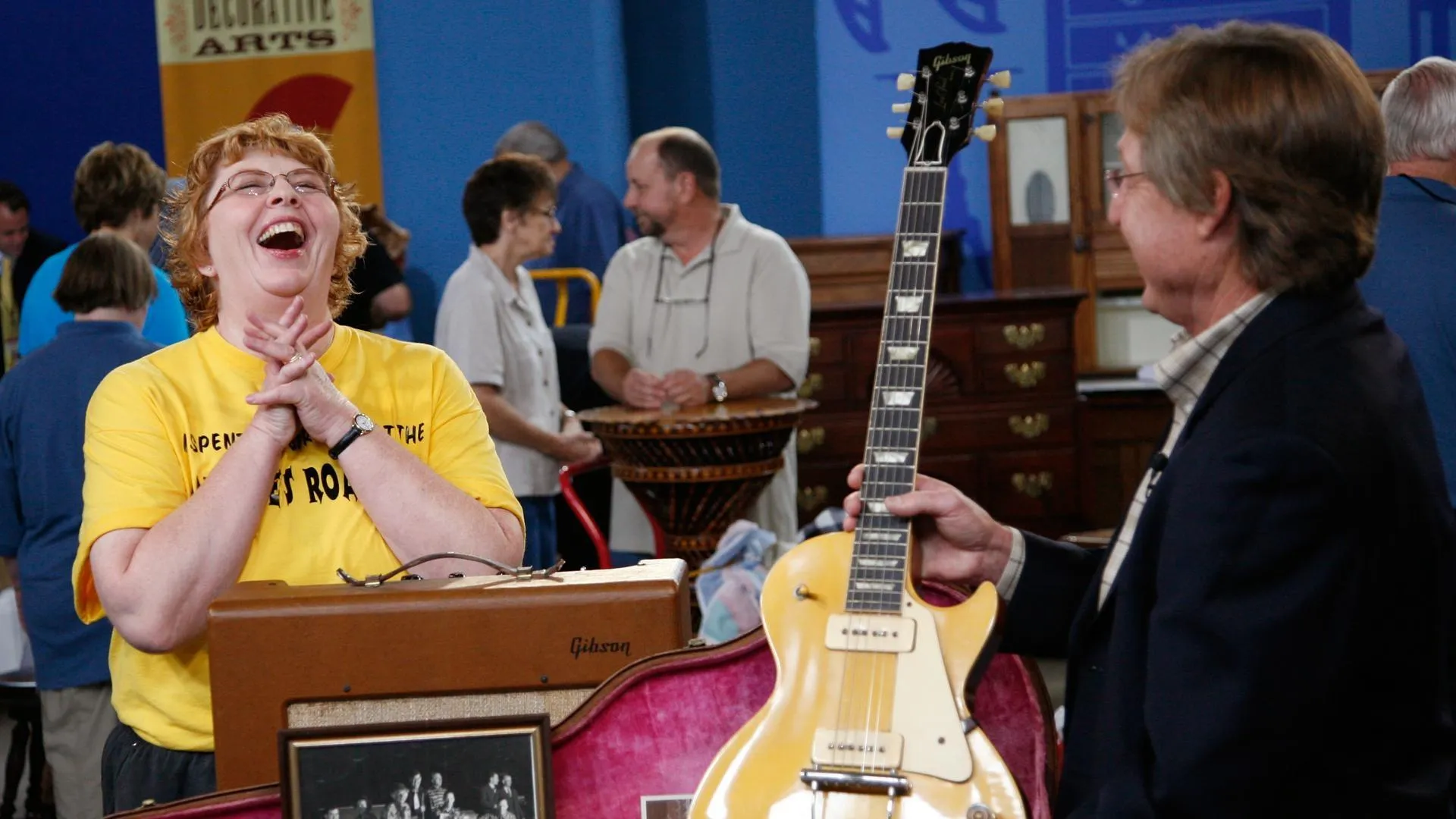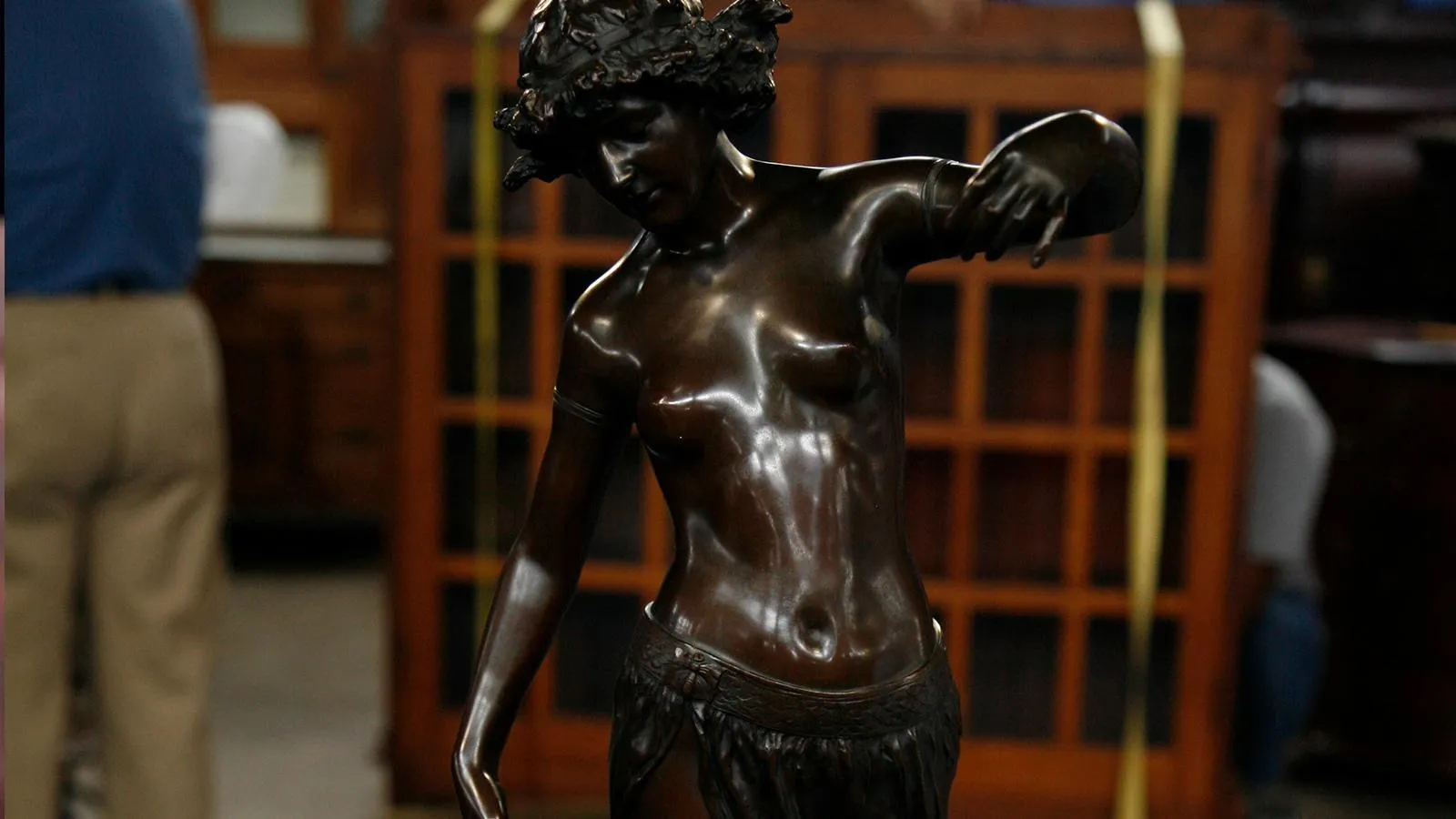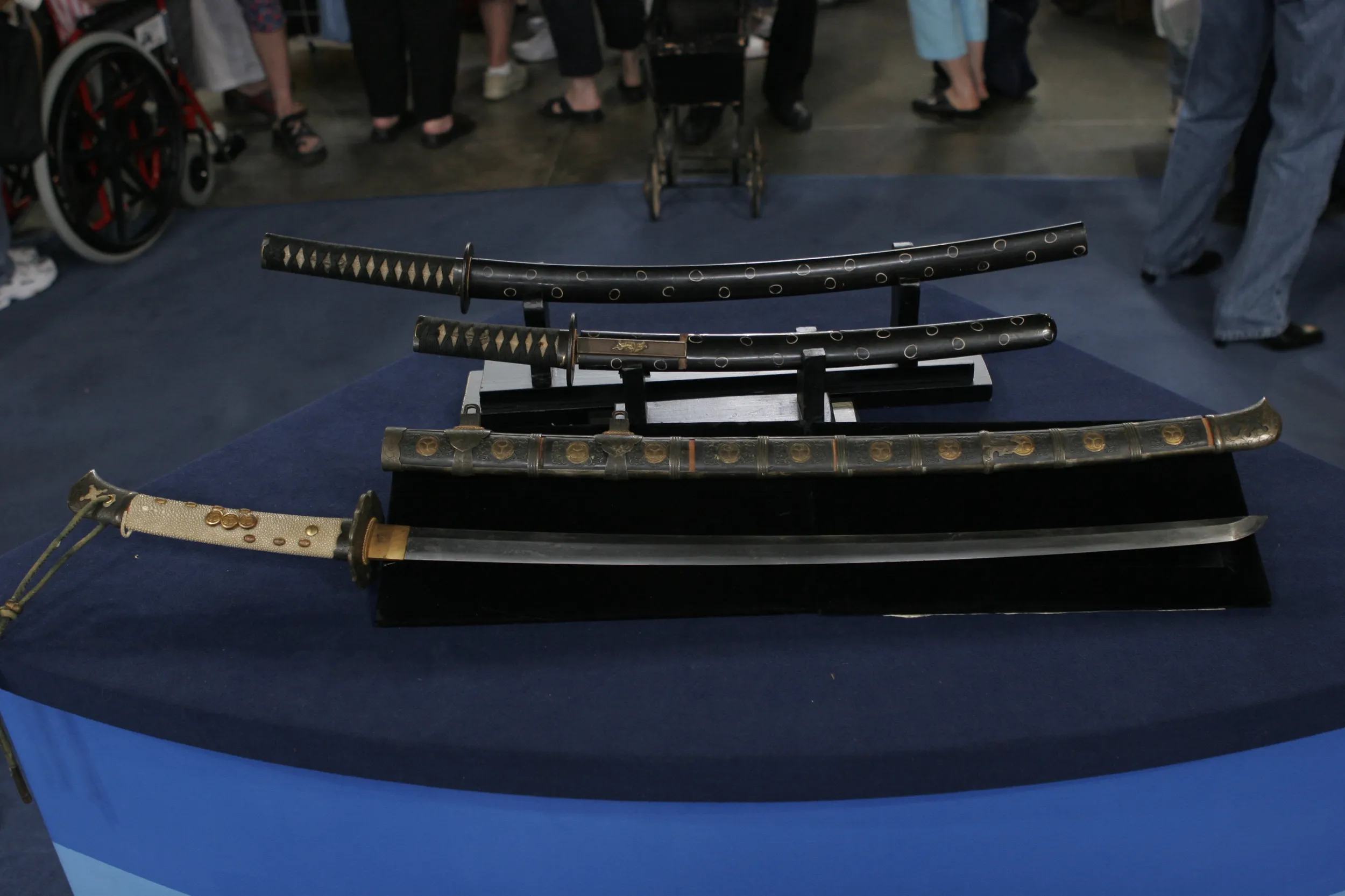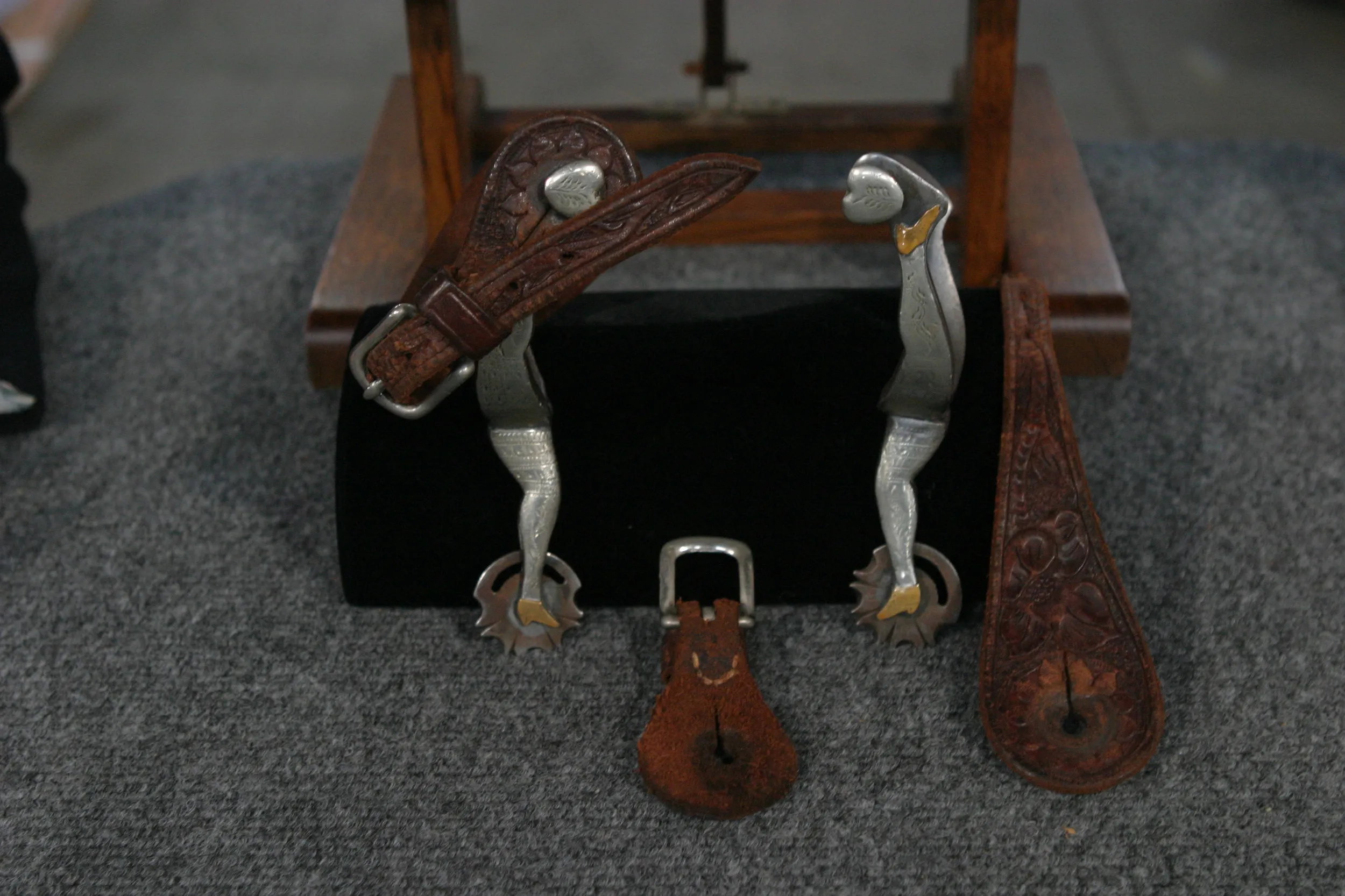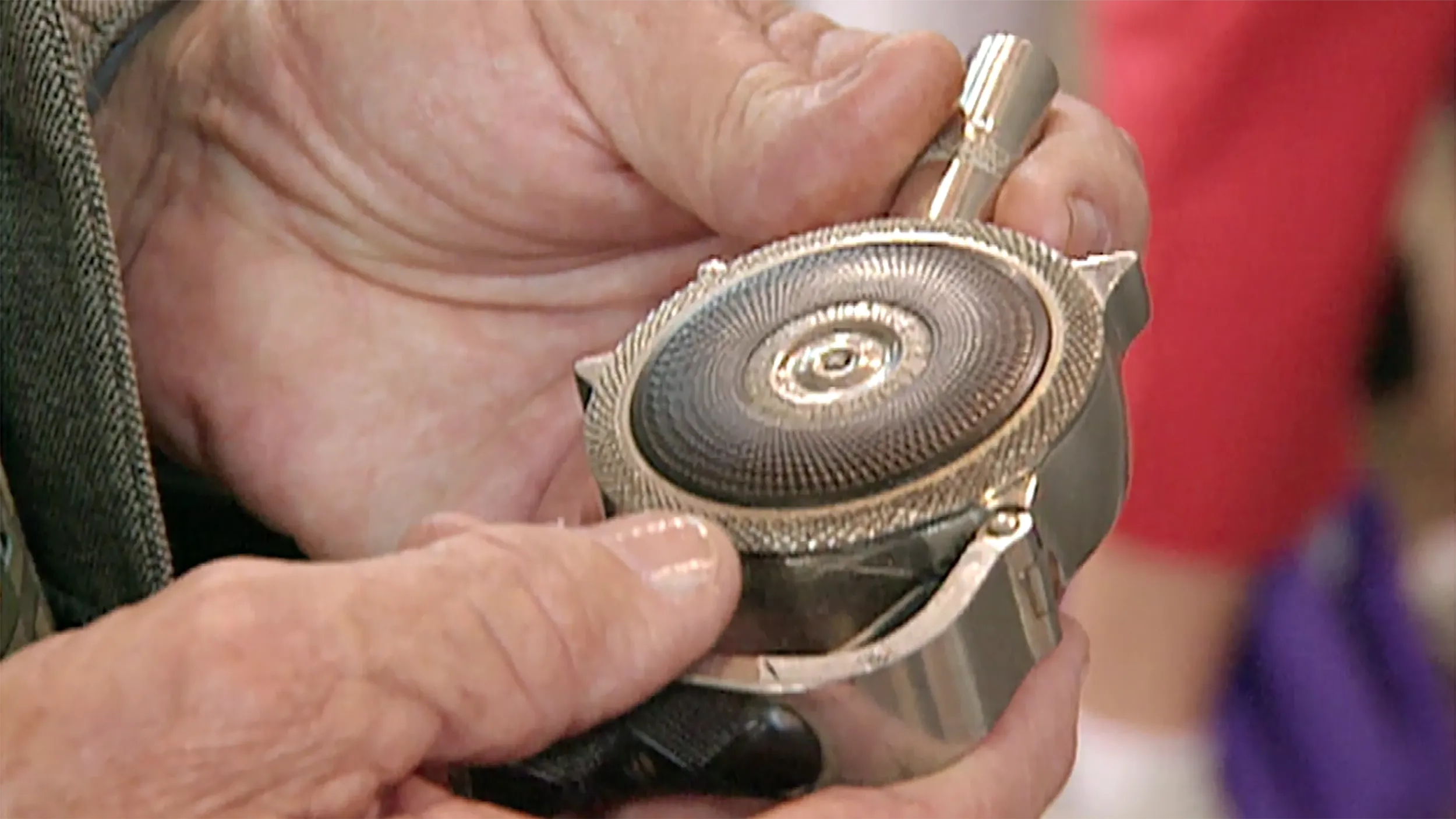GUEST: Right after World War II, my grandmother made a trip to Japan, and I think she retrieved some items that she had over there. And she brought nine matchlock rifles, just about like this, and brought this, this helmet and many other antiques, also. I got the matchlock rifle when I was nine years old, and at that time, Davy Crockett was really popular. She said, "Take your pick." And of course, I picked the plain one, just like Davy Crockett had. All the others were completely inlaid with gold. So, I don't know if I missed out on anything or not, but I have enjoyed this rifle so much, and, and I've had it since I was nine, I think.
APPRAISER: Okay, and were you wearing the helmet when you were running through the woods?
GUEST: Well, no, my mother told me my family was samurai.
APPRAISER: Mm-hmm.
GUEST: This was passed down from father to oldest son. My grandmother gave it to me because I was the oldest grandson.
APPRAISER: Okay.
GUEST: So, I've had it all this time, and I got it at about the same time as the rifle.
APPRAISER: When Commodore Perry went to Japan in 1852 and again in 1854, that was the first real contact the Japanese had had with the West for hundreds of years. Previously, they'd been in touch with the Dutch, but for several hundred years, there'd been not much contact at all, until Commodore Perry. When they saw that, there was a recognition that they had to make dramatic changes from a feudal society to an industrialized society, or else they were going to face the same kind of problems that was going on in China, which was that China was being partitioned by the Western powers.
GUEST: Yeah.
APPRAISER: They didn't want that to happen. So, they made a decision. The effect of that decision was what is called the Meiji Restoration, where they actually installed an emperor who would bring the country together. Instead of having these different feudal areas, there would be a central, unified government. And when that happened, at that same time, there were powerful families, like your family, who were samurai, who were affected dramatically. And by 1868, when this occurred, there was a decision made that the samurai, the feudal system, had to be disbanded and left behind. So, what we have left here is a helmet and a gun, both of which date from the mid-19th century, but the helmet would've been just part of a larger suit of armor. And you're right, this is a ceremonial helmet and these are your family crests. The mon...
GUEST: Oh!
APPRAISER: The family crest for your, for your family.
GUEST: Interesting.
APPRAISER: So, your ancestor would've been wearing this, and the colors would've been bright orange and white, and you've got these sort of wood block-printed designs on the front, and you can see the dragon here. Actually is supposed to go here, in the center section, but it's been broken.
GUEST: Yeah.
APPRAISER: But imagine your ancestor walking in front on a, on a parade...
GUEST: Wow.
APPRAISER: ...resplendent in this black lacquer suit of armor.
GUEST: Yeah, yeah.
APPRAISER: You know, just amazing kind of show of power and professionalism and the past, all rolled into one. And certainly, the people who were the craftsmen that were making the guns and making the armor changed what they were doing and they began making works of art. You want to keep these, obviously, and pass them on.
GUEST: Yeah.
APPRAISER: To protect these, to take care of them-- you can't replace them, it's the association. But, you know, for a monetary value, I would say that you should insure these two together for probably around $4,000.
GUEST: $4,000?
APPRAISER: Maybe $5,000.
GUEST: Okay, that's very nice.
APPRAISER: Somewhere in there.
GUEST: Very nice.

